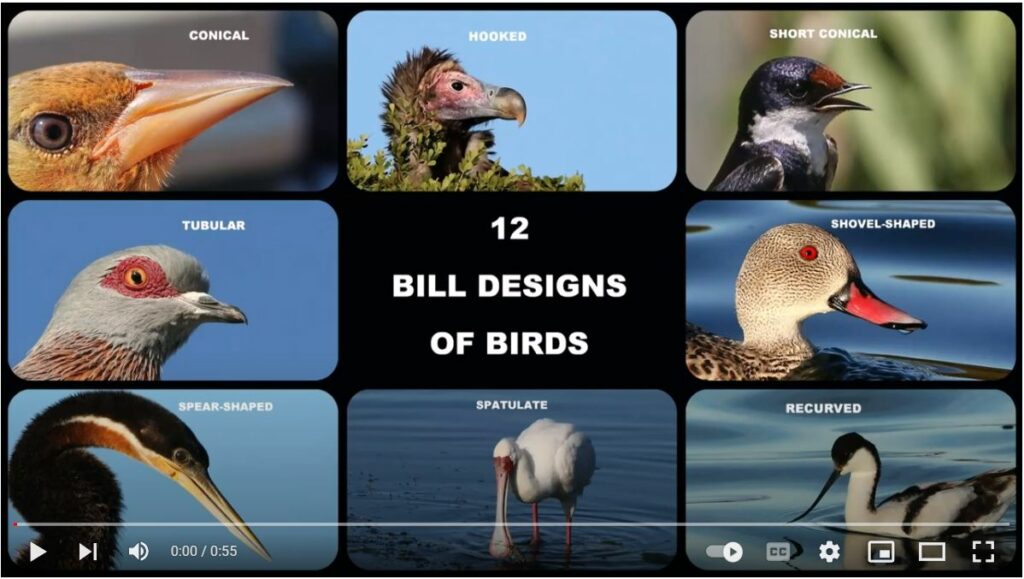Birds’ bills have evolved to serve various functions beside the procurement of food. Bills are also used for carrying nesting material when building a nest made of twigs or weaving an elaborate nest (weavers) or constructing a mud pellet nest (swallows). Birds use their bills in defending themselves against other birds or predators. Bills are sometimes used during courtship rituals where the pair touch bills intimately. All birds use their bills for preening their bodies and removing ectoparasites and dirt.
In this blog I will feature 12 different bill designs in birds and mention how they are used.
1. SPATULATE
These spatulate bills are dorso-ventrally flattened with a large spatulate or spoon-shaped tip. They use this bill for tactile feeding under the water. Spoonbills have these spatulate bills.
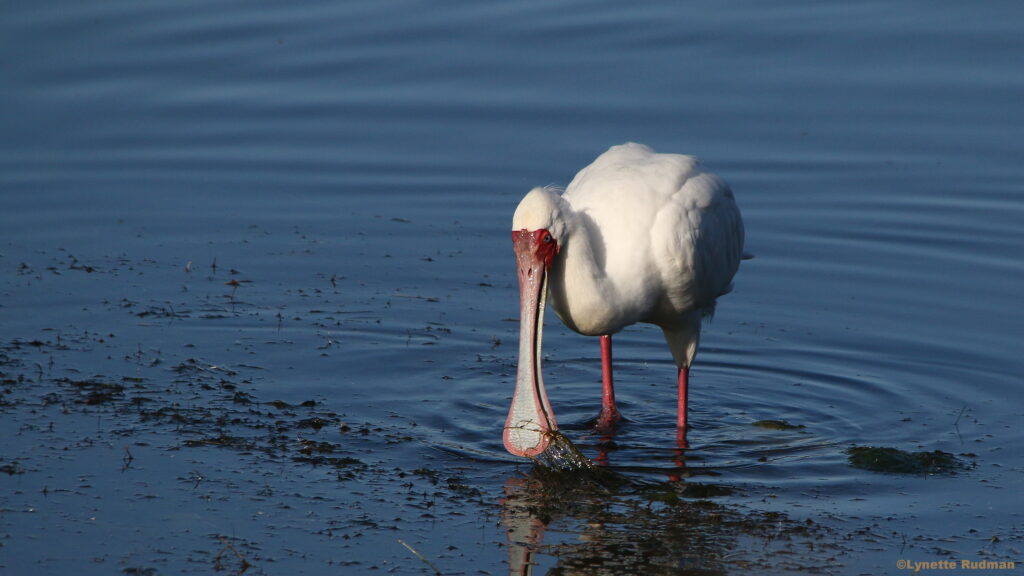 African Spoonbill feeding tactilely in the water.
African Spoonbill feeding tactilely in the water.
2. KINKED
Flamingos have a kinked bill that has a sudden bend in it. They filter feed with their kinked bills held upside down. The bill is especially adapted to filter feeding just under the surface of the water.
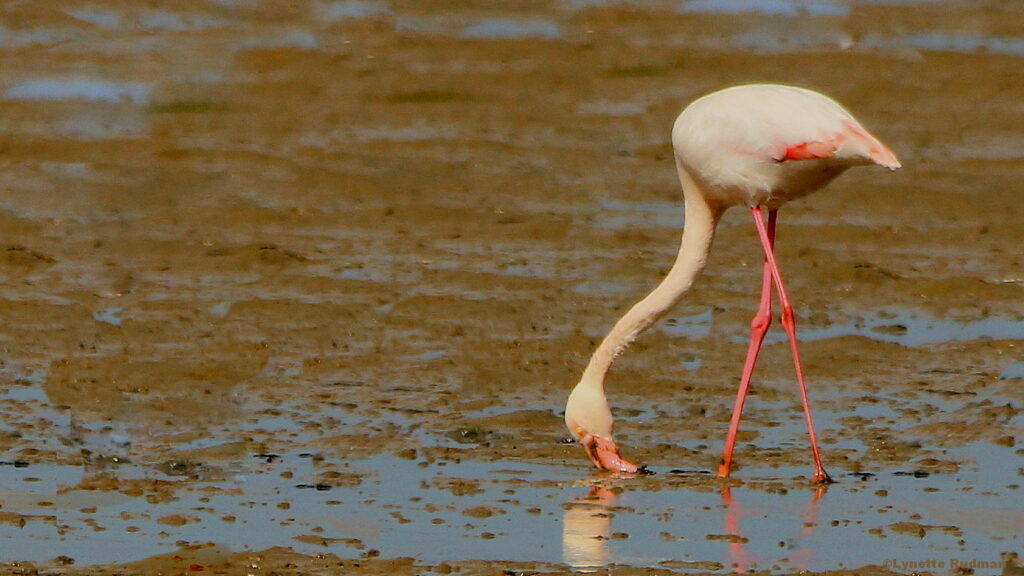 Greater Flamingo feeding with its kinked bill upside down.
Greater Flamingo feeding with its kinked bill upside down.
3. DECURVED
Decurved bills curve downwards along their length. These bills are used for probing in soil or in mud under the water. They have tactile sensors at the tips of their bills that smell and feel the movement of prey without visually seeing it.
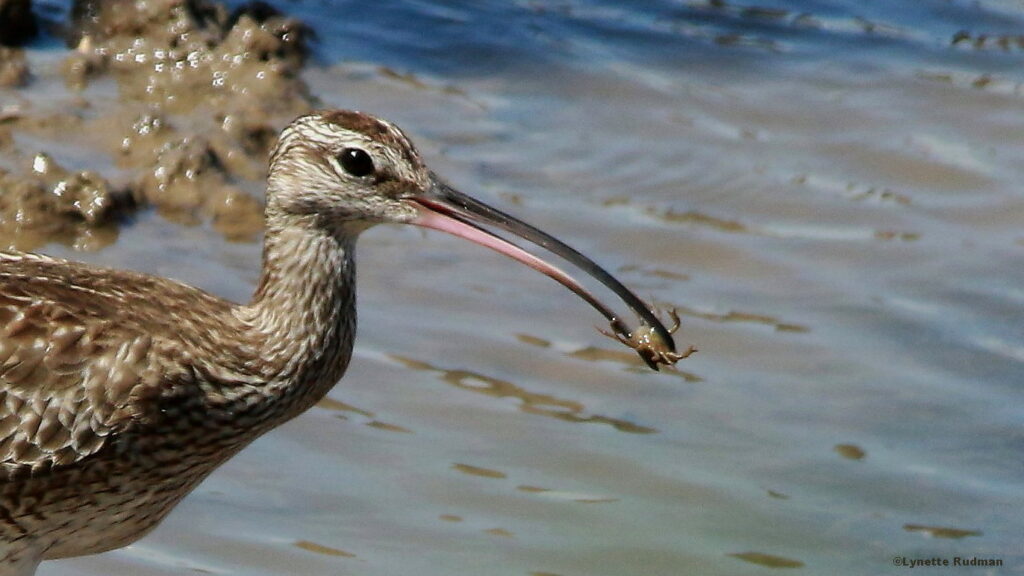
This Whimbrel just caught a crab that it found tactilely under the water.
4. RECURVED
The unique bill of an avocet curves upwards towards the end. The bill is adapted for filter feeding where fine lamellae on the edge of the bill are used to catch small invertebrates.
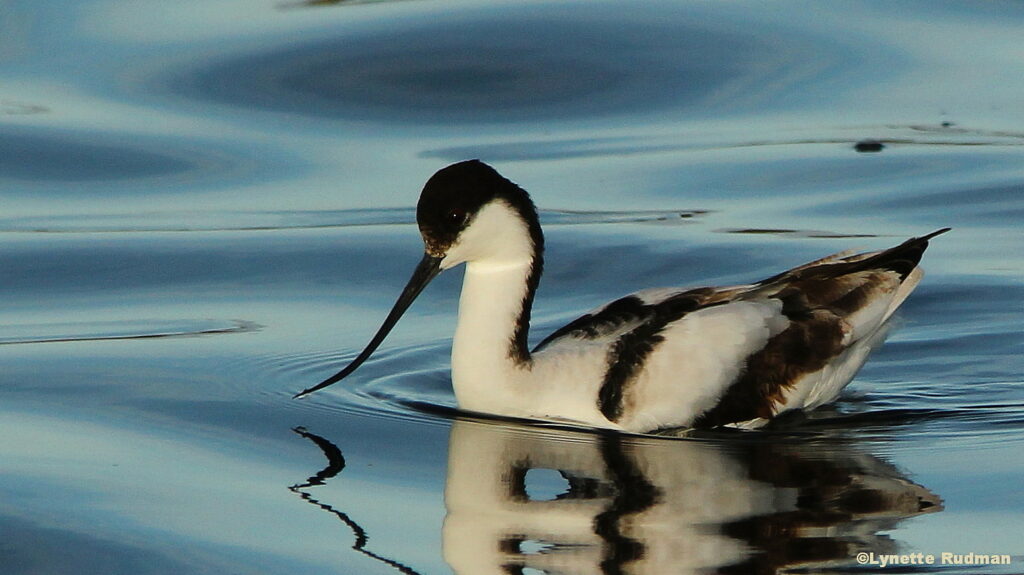
A Pied Avocet with its long, thin recurved bill.
5. CONICAL
Conical bills are chunky bills with a broad circular base that tapers to a point. These conical bills are helped by powerful muscles that crush hard food items like seeds and hard berries.
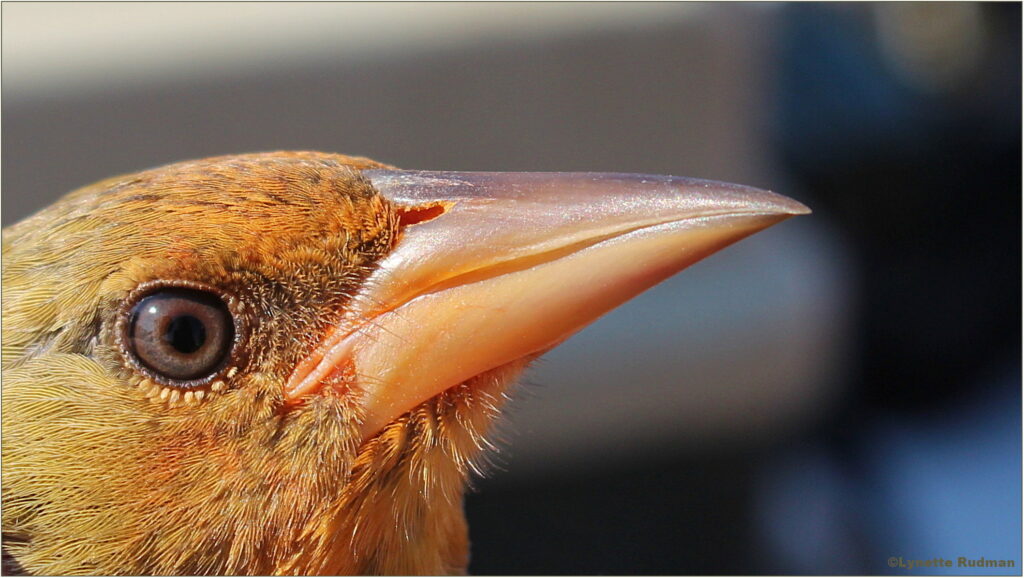
A young Cape Weaver showing its chunky conical bill that is perfect for crushing seeds to remove the husk.
6. FLAT CONICAL
These flat conical bills are longer and more slender than the shorter conical bills of the seed eating birds. The narrower bill helps the bird to see the prey more easily. Birds that eat insects and other animal food have these flat conical bills.
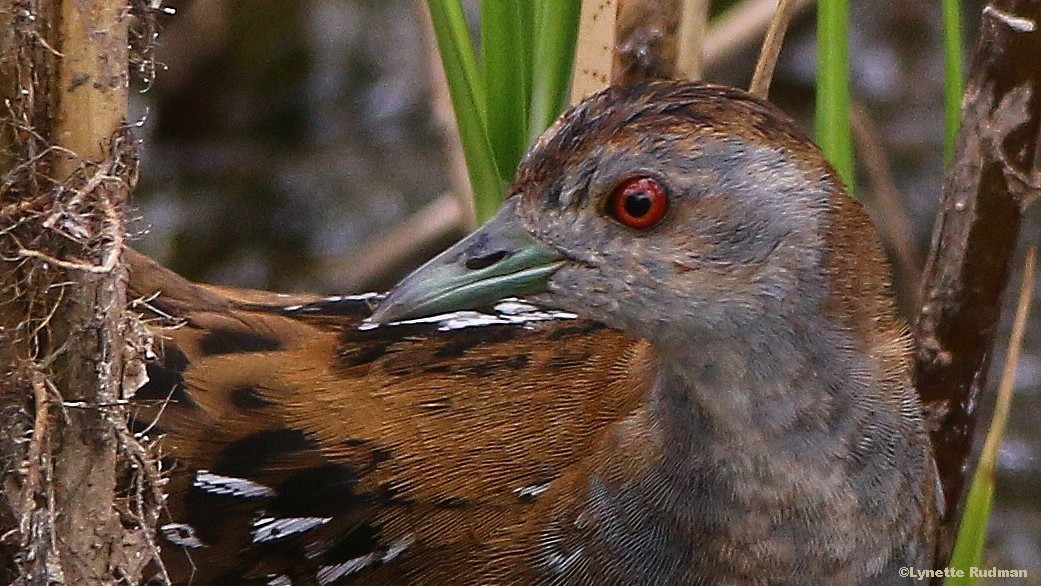
A Baillon’s Crake with its flat conical bill.
7. SHORT CONICAL
Short conical bills are small and weak but are wider than they are high. They are also dorso-ventrally flattened. Swallows and swifts use their short conical bills with a wide gape to catch aerial insects while flying at high speed through the air.
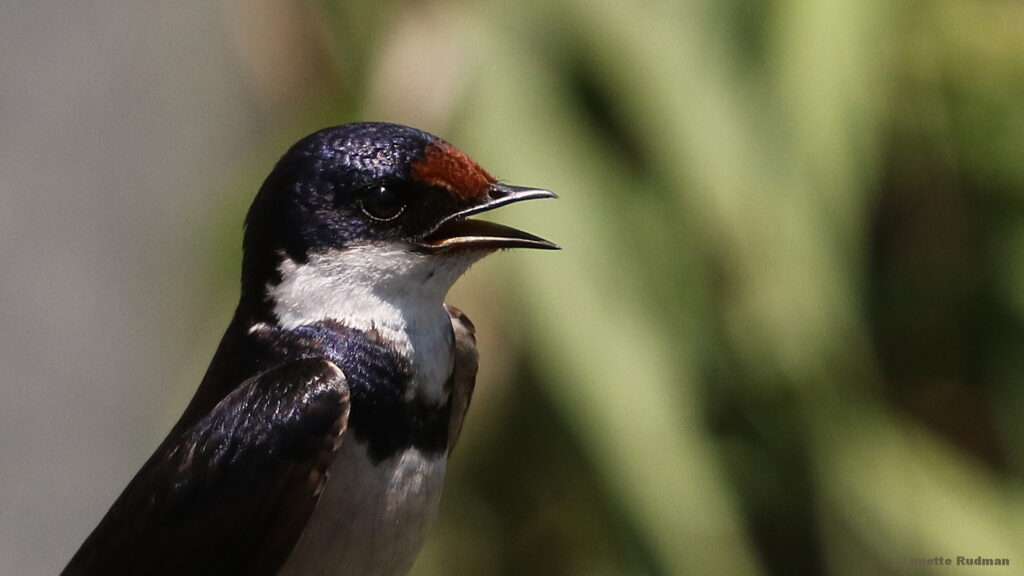
A White-throated Swallow’s bill is short and weak but it has a very wide gape when opened.
8. HOOKED
Raptors and shrikes have decurved hooks on the upper mandible. The hooks are ideal for tearing food items like animal prey into smaller pieces.
 The massive hooked upper mandible of a juvenile Lappet-faced Vulture.
The massive hooked upper mandible of a juvenile Lappet-faced Vulture.
9. TUBULAR
The tubular bill is circular in cross section. It is usually without serrations or hooks. The bill is adapted to pecking small stationary food items like seeds and green foliage. Doves and pigeons do not remove the husks of seeds but will swallow it whole.
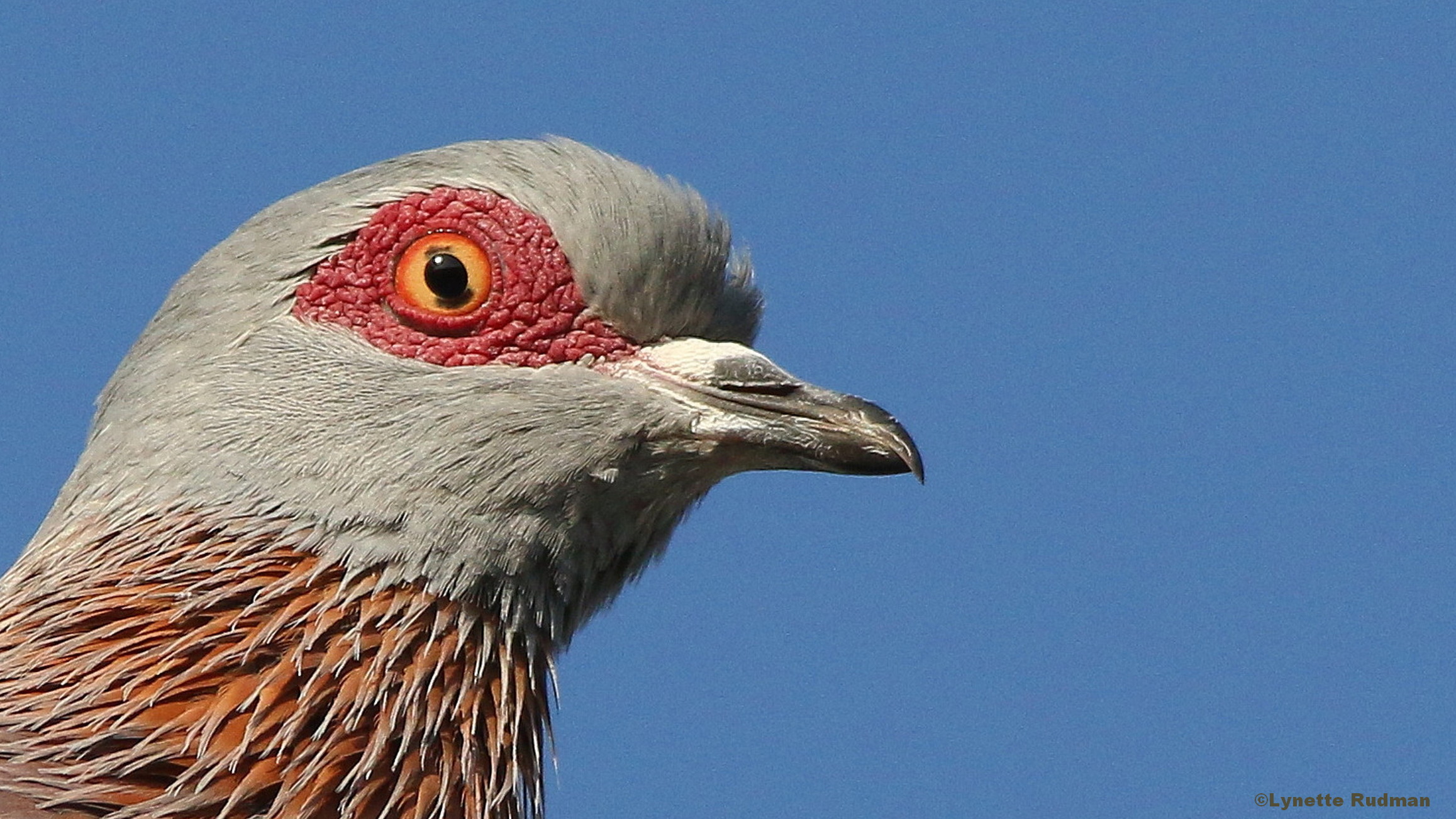 Speckled Pigeon with its tubular bill that is ideal for picking up seeds.
Speckled Pigeon with its tubular bill that is ideal for picking up seeds.
10. SPEAR-SHAPED
These spear-shaped bills are laterally flattened, which enables the eyes to see along the length of the bill in binocular vision. All these birds are predatory and eat animal prey. The darter actually spears the prey under the water with its sharp bill.
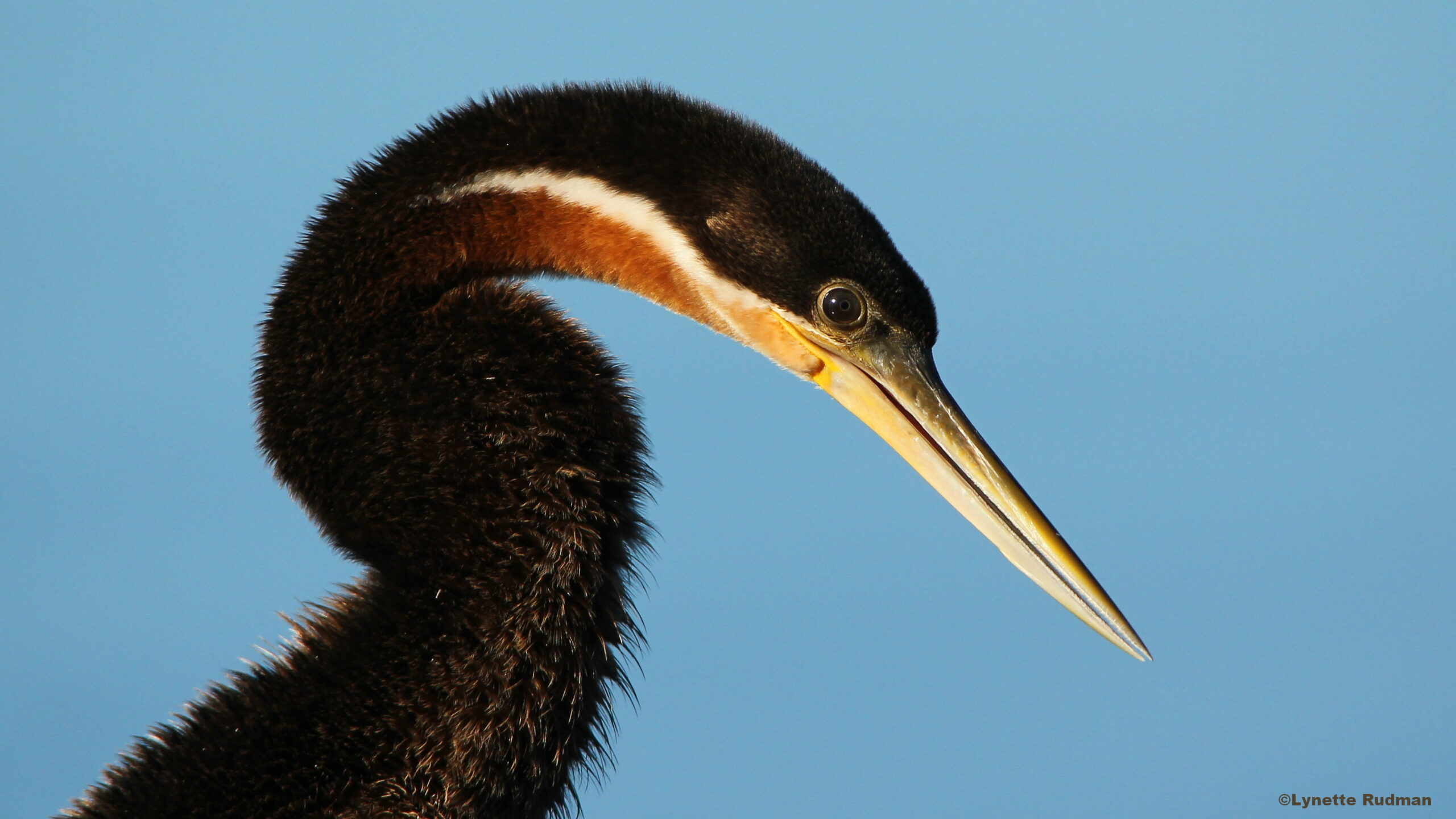 African Darter showing its long sharp bill that it uses for spearing fish and other prey under the water.
African Darter showing its long sharp bill that it uses for spearing fish and other prey under the water.
11. SHOVEL-SHAPED
These shovel-shaped bills are dorso-ventrally flattened like a shovel. They are adapted to filter feeding. Ducks feed by dabbling, which is the rapid opening and closing of the bill on or just below the surface of the water.
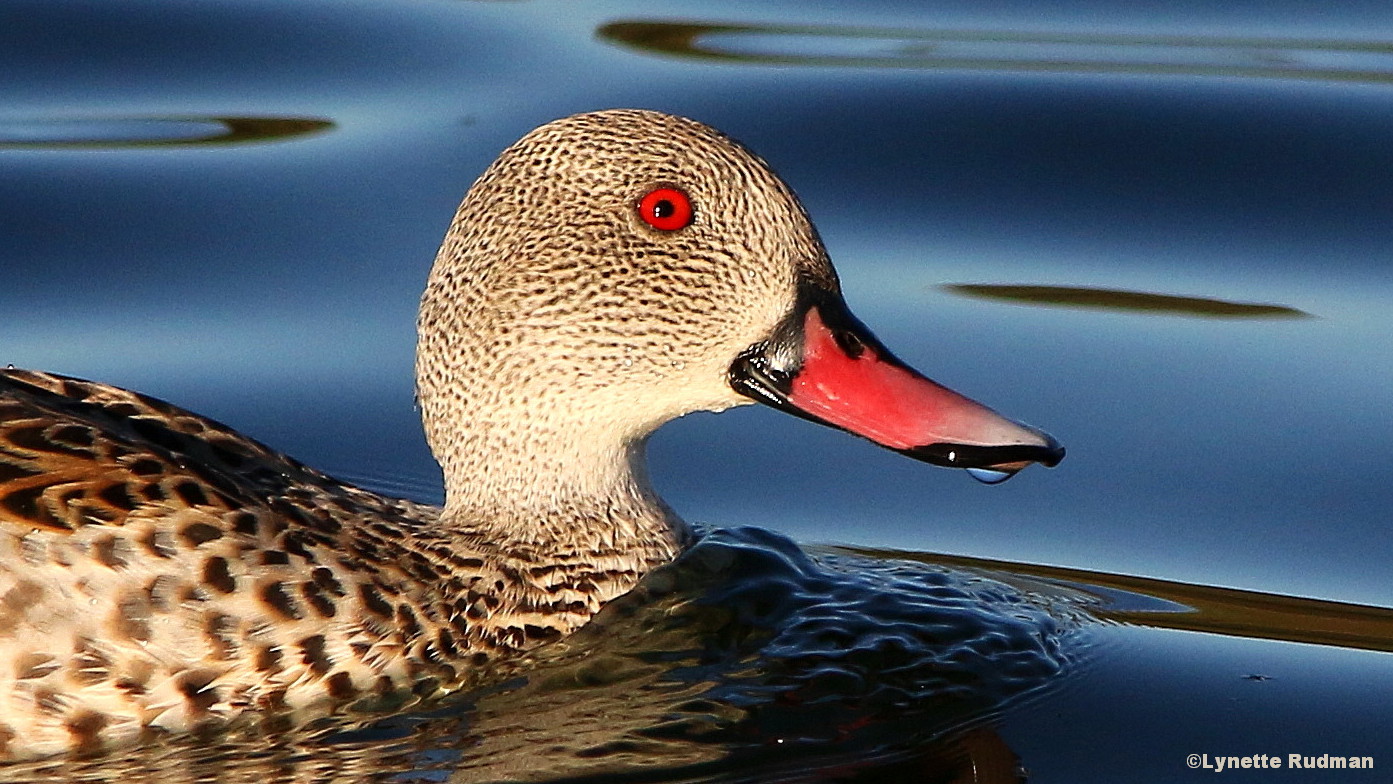
Cape Teal showing its beautiful red and black shovel-shaped bill.
12. CHISEL-SHAPED
The woodpeckers have these chisel-shaped bills that are sharp, triangular and reinforced. They resemble spear-shaped bills but they are a lot shorter. Their design is effective in excavating insect larvae and prey from cavities in tree bark and hard wood. They also use their reinforced bills for excavating nesting cavities in tree trunks.
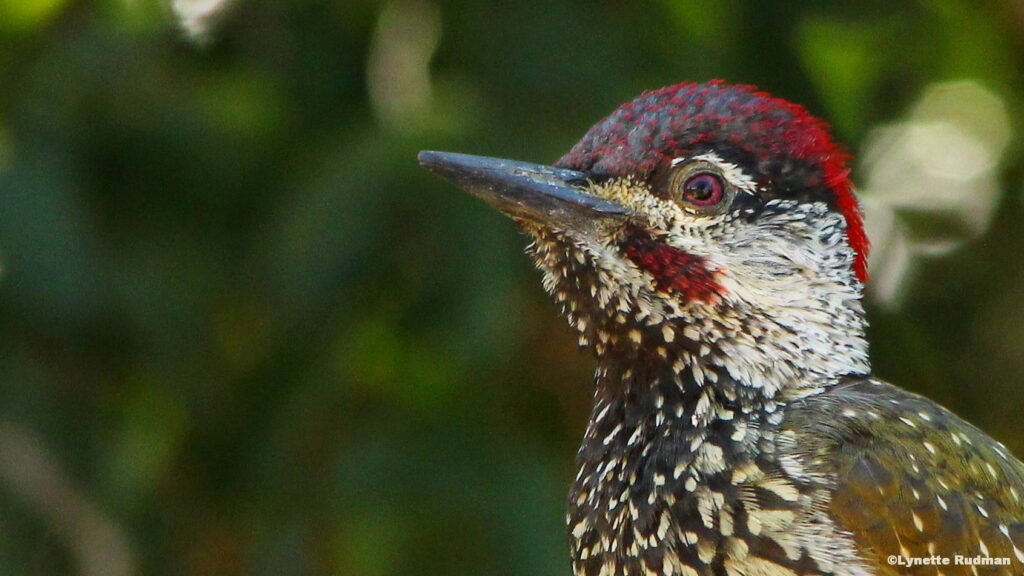
Golden-tailed Woodpecker with its short, triangular, reinforced bill for excavating holes for nesting or reaching hidden insects and their larvae in hard wood.
Watch this video I made about the 12 different bills shapes and what they are used for. I also have detailed videos on each bill design. The links will be found at the end of this video:
References: Beat About The Bush Birds by Trevor Carnaby.
